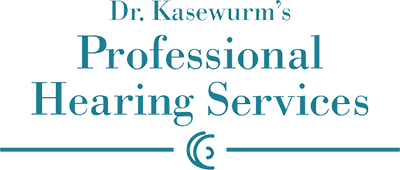
When it comes to history, there are three distinct kinds of people: those who are really interested and fascinated by history, those whose eyes glaze over and they begin to fall asleep when history is mentioned, and people who think that aliens are responsible for history.
Aliens aren’t behind the history of hearing aids. But it’s most likely a lot weirder than you may believe. After all, hearing loss isn’t really a new thing; it’s been around as long as humans have. People have, as a result, been attempting to find new effective ways to cope with hearing loss since the beginning of our existence.
Knowing the history of your hearing aids can give you a deeper appreciation of how your own tiny, digital devices work, and why you should use them more often.
Hearing loss has been around for thousands of years
Evidence of hearing loss going back to the very beginning of human existence has been found by archaeologists. Fossil evidence shows signs of ear pathologies. It’s pretty cool! Mentions of hearing loss also start showing up once written language becomes a thing (for instance, there are many Egyptian sources that discuss hearing loss symptoms).
Obviously, hearing loss isn’t new. And it wasn’t any better then than it is now (this is particularly true because it was more challenging to manage then). Communication will be a lot more difficult if you have neglected hearing loss. You might become alienated from friends and loved ones. When humans were a little more primitive, neglected hearing loss could lead to a shorter lifespan as they might not have been capable of detecting danger.
So for thousands of years, humans have had an incentive to learn how to manage hearing loss. And they’ve even managed some terrific successes!
A timeline of hearing aid-type devices
The first thing to appreciate is that our history of hearing aids is not exhaustive. Not all evidence of hearing devices is documented through time. Even if we don’t have a written record of exactly what ancient people did to relieve hearing loss, it’s very likely that they took measures in that direction.
But here’s what we do know about the known hearing aid timeline:
- 1200s: Animal Horns: Hollowed out animal horns served as some of the first proto-hearing aids. Evidence of this kind of hearing device goes back to the 1200s, and it’s likely people used them to help minimize the effects of hearing loss. The concept was that the funnel-shape of a hollowed out animal bone would help move sound more directly into the ear. Obviously, this device isn’t working on the level of a modern hearing aid because there is no amplification. But it’s likely they provided some moderate ability to reduce distracting sounds.
- 1600s: Ear Trumpet: The “cone shaped” hearing aid was the dominant format for hundreds of years. And that persisted into the seventeenth century, when “ear trumpets” became a popular means of treating hearing loss. These devices looked, well, like trumpets. The narrow end would go in your ear. You could find them made out of a wide array of materials (and with a startling variety of shapes). The early models were rather large and unwieldy. Eventually, clever individuals created smaller, more collapsible versions of these ear trumpets, so people could bring them on the go. Once again, these were never very effective, because they didn’t amplify sounds. But they could bring sound more directly to your ear.
- 1900s: Electronic Amplification: In the late 1800s, the carbon microphone was invented but wouldn’t be implemented into hearing aid technology until early the 1900s. Their ability to amplify should have made hearing aids reliable and practical, right? Not really. As of the early 1900s these devices were too large to be realistic or wearable. The technology would need quite a bit of refinement before it would be very useful.
- 1920s: Wearable Hearing Devices: Say hello to vacuum tubes! The same technology that energized those old, incredibly bulky television sets was actually state-of-the-art, once upon a time! Relatively smaller hearing aids that were about the size of a backpack were now feasible. Slightly clearer sound and better amplification were also feasible.
- 1940s: Pocket-Sized Hearing Aids: It’s a giant leap from a backpack sized hearing aid to a purse or pocket sized one. This was the result of the development of the transistor, which meant you needed less technological bulk to attain the same impact. It became a huge advantage, as a result of this technology, to bring your hearing aid with you wherever you went.
- 1970s and 1980s: Hearing Aids Get Smaller: As technologies got better, hearing aids became smaller. Hearing aids got substantially smaller in the 1970s and 80s. This made them simpler to use, and more popular. Unfortunately, the actual amplification was still fairly basic. They just amplified all of the sound they picked up. Most people need something a little more fine tuned to manage their hearing loss, but it was still better than nothing.
- 1982: Digital Hearing Aid: While not fully adopted and commercially available until 1996, 1982 was the year of the first digital hearing aid. Digital hearing aids changed the hearing aid landscape by making everything smaller and more discrete while offering custom amplification and better sound quality. With the introduction of digital hearing aids, treatment for hearing loss became much more robust and successful.
- 2000s (and Beyond): Hearing Aids Get Wireless and Smart: An growing amount of sophisticated technology has been put into these digital hearing aids since they were invented. This began with Bluetooth wireless connectivity. These days, modern hearing aids will help you hear better than ever by utilizing machine learning algorithms. This integration with other technologies makes hearing aids more effective, and more convenient!
History’s best hearing aids
Humanity has been working on and bettering hearing loss for centuries, at least.
Better than at any other point in history, we are able to accomplish that with modern hearing aids. And because they’re so beneficial, these little devices are also more prominent than ever before. They can help with a larger number of hearing problems.
So hearing aids can help you if you want to create a stronger connection with your friends, family, or the clerk at your local pharmacy. (See? No aliens involved.)
Find out how hearing aids can improve your life. Call us for an appointment.
Call Today to Set Up an Appointment
References
https://hearinghealthfoundation.org/blogs/hearing-aid-history-ear-trumpets-european-royalty-earbuds
https://www.hear-it.org/lighter-smaller-and-better

